Paper shortage
It was not easy for many newspapers to have their own printing house. Many newspapers had to rent printing houses, so when they were short of money, the papers were held until payment was made. The newspaper Doi Moi survived for 7 issues in 1935, and sometimes the newspaper "stayed" at the Long Quang printing house waiting for several days to get the money to release it. Tran Huy Lieu remembered that in 1936, the second issue of Tieng vong lang ban dich dot dich nong had no money to get the paper back, so it had to stay at the printing house and the newspaper was suspended. There were also many types of printing houses. Some printing houses had their own premises, while others had to rent to operate. The printing house of Mrs. Thanh Thi Mau, which bore her name, rented 186 d'Espagne Street, Saigon (today's Le Thanh Ton Street), from an Indian owner, and was later reclaimed. Saigon Daily News No. 61, published on February 3, 1931, reported that when this printing house moved, L'Écho Annamite had to temporarily suspend publication because there was no space to print.

The Bee Newspaper advertises about Rang Dong printing house.
Having their own printing houses, newspapers are proactive in printing, can set the date of publication, increase or decrease the number of copies printed when necessary. Tieng Dan of Huynh Thuc Khang has Tieng Dan printing house, Con Ong newspaper of Nghiem Xuan Huyen has Rang Dong printing house... See Con Ong newspaper number 34, published on January 24, 1940, on the left side of the manchette, it introduces: "Rang Dong printing house, CON ONG's own printing house, has opened. No. 194, Hang Bong Lo street - Hanoi".
With Thuc Nghiep Dan Bao, journalist Huynh Thuc Khang had good memories. Huynh Thuc Khang's autobiography recorded that in 1927, in preparation for the birth of Tieng Dan, Mr. Huynh, Dao Duy Anh, and Nguyen Xuong Thai went to Hanoi to buy a printing machine. "Luckily, we came across Nghiem Ham Printing House in Hanoi, which had a sale, only a small printing machine. Thanks to Mr. Mai Du Lan, the owner of Thuc Nghiep Newspaper, who had just bought an unused printing machine, he kindly gave it away."
Newspaper printing depends heavily on printing paper, which must be imported from the West and is not available in our country. This dependence leads to trouble with newspaper prices. Saigon Daily News No. 36, published on January 3, 1931, explained the delay in publishing the supplement: "The day before, we promised that from December 23rd onwards, we would print an additional supplement every day like our colleagues, but until now it has not been printed because the paper purchased from the West arrived late. So when we have enough paper, this newspaper will publish 6 pages to fulfill our promise to our readers and will increase the price of each issue by 7 su [xu]."
Printing paper was always a problem for printers, and also a headache for newspapers, because the price of paper kept increasing due to the war causing traffic problems. The newspaper Truyen Ba No. 59, published on November 26, 1942, had to advertise on page 30: "Paper is expensive and difficult to buy, agents should only buy enough to sell the newspaper, if the paper is unsold it cannot be returned."
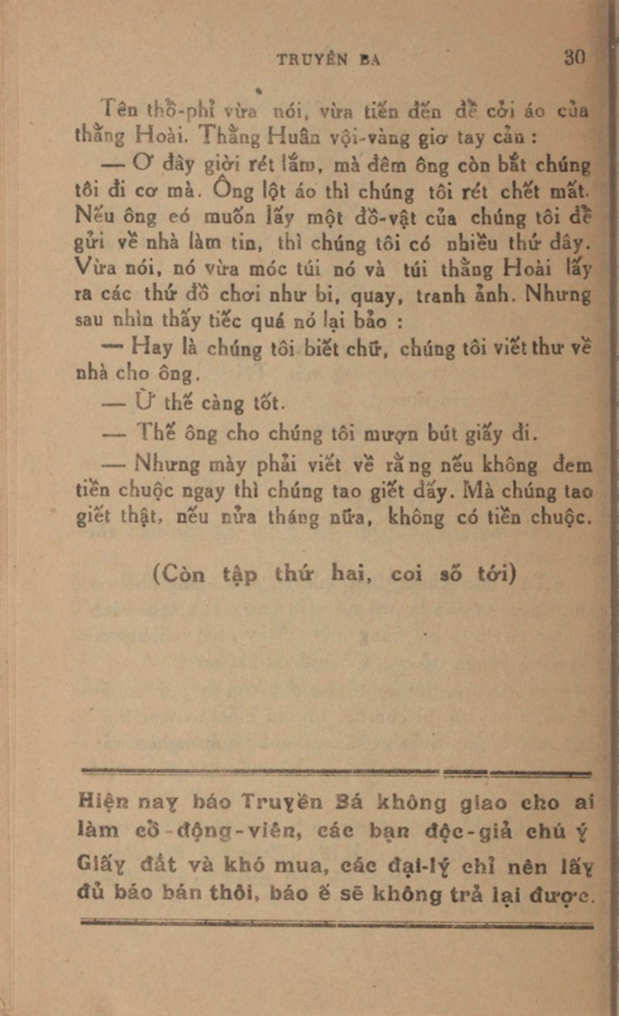
Advertisement on Propaganda No. 59
DOCUMENTS OF DINH BA
Tin Moi Newspaper prints ten thousand copies in 2 hours
Handwritten newspapers existed in the history of Vietnamese journalism, but their coverage was limited to schools and prisons. Many handwritten newspapers left their mark, such as Suoi reo in Son La prison, run by veteran journalist Xuan Thuy; General opinion in Banh 2 of Con Dao, which gathered many writers such as Nguyen Van Cu, Le Duan, and Bui Cong Trung, according to Hoang Quoc Viet in his memoir Hot Road. Lithographs were often found in secret newspapers that went against the ruling policies of French colonialism and Japanese fascism. The newspaper Duoi giac nuoc, mentioned by To Huu in his memoir Remembering a time, was very difficult to print and the quantity was not large.
The press was first born in the South with Chinese and French newspapers for the purpose of French colonialism. The national language newspaper was born later, as explained by Phan Tran Chuc in the article History of Northern journalism: Dang co tung bao on Ngo bao number 2584, published on April 23, 1936, because the national language had many accented letters while the French language did not. To print a national language newspaper, one had to hire the French to cast the appropriate type of letters, leading to inconvenience when "the casting took a long time, the road was far away and not as convenient as it is now. Therefore, printing houses that wanted to publish newspapers or books in the national language, at least had to prepare every year". Regarding the productivity of printing newspapers, we must mention Dr. Nguyen Van Luyen, who was involved in many newspapers such as Ve sinh bao, Bao an y bao, Tin moi... Pham Cao Cung, who worked on Tin moi, said that the newspaper was printed on rolls of paper, not printed in separate sheets like many newspaper printing houses. Because it was a roll printing machine, the productivity reached 10,000 sheets in 2 hours.
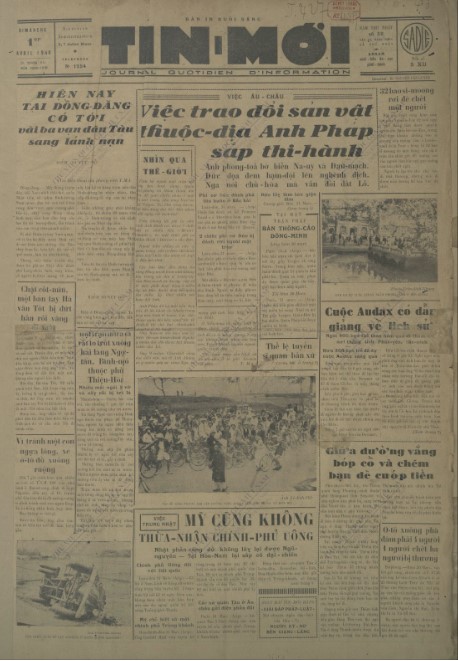
Tin Moi Newspaper No. 52, published on April 1, 1940
NATIONAL LIBRARY OF VIETNAM
For revolutionaries, when making newspapers, they had to rent a printing house because of the low cost. To save money, there was no place like a printing house with people sympathetic to their activities. In his memoir The Hot Road, Hoang Quoc Viet recounted that when he was making newspapers, "in the printing houses we rented to print newspapers, many typesetting and machine-working workers took great care to print our movement's newspaper cheaply and beautifully, preventing sabotage by the West and the owners."
In terms of form, the press innovation credits Do Van as the one who reformed the printing profession, making the Hanoi Noon Newspaper "a beautiful newspaper, presented clearly like a French newspaper", according to the Lich trinh van bien ngu bien ngu (National Language Book and Newspaper Evolution). With this newspaper, Hoang Tich Chu changed the appearance to help the newspaper become completely an information newspaper. Do Van oversaw printing, selected the words, and was responsible for creating a beautiful newspaper format. This is considered a press revolution with Hoang Tich Chu's mark on the content and Do Van's mark on the technique and aesthetics.
(to be continued)


![[Photo] Sparkling lanterns to celebrate Vesak 2025](https://vphoto.vietnam.vn/thumb/1200x675/vietnam/resource/IMAGE/2025/5/7/a6c8ff3bef964a2f90c6fab80ae197c3)

![[Photo] Prime Minister Pham Minh Chinh chairs meeting to review preparations for trade negotiations with the United States](https://vphoto.vietnam.vn/thumb/1200x675/vietnam/resource/IMAGE/2025/5/6/1edc3a9bab5e48db95318758f019b99b)
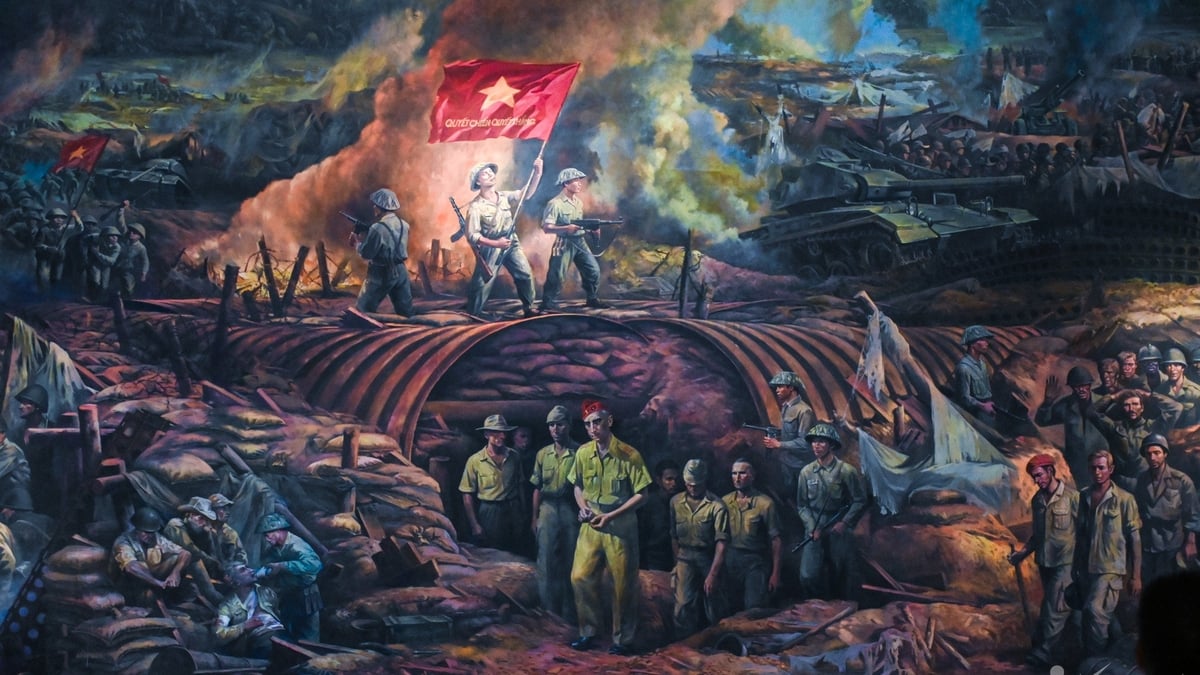



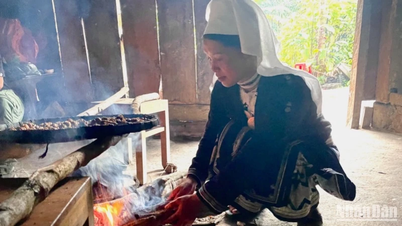
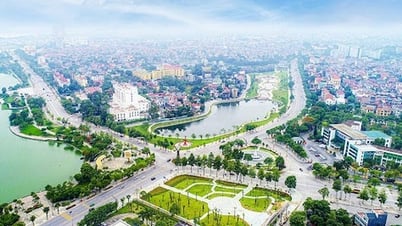
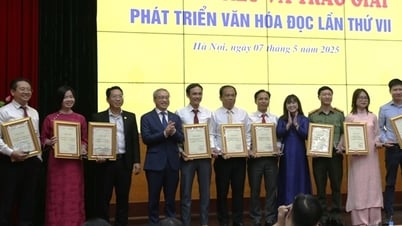
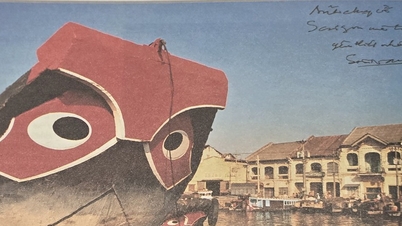










![[Photo] Prime Minister Pham Minh Chinh receives Mr. Tomas Heidar, Chief Justice of the International Tribunal for the Law of the Sea (ITLOS)](https://vphoto.vietnam.vn/thumb/1200x675/vietnam/resource/IMAGE/2025/5/6/58ba7a6773444e17bd987187397e4a1b)





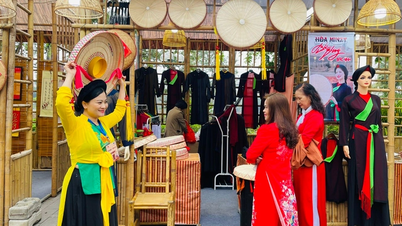












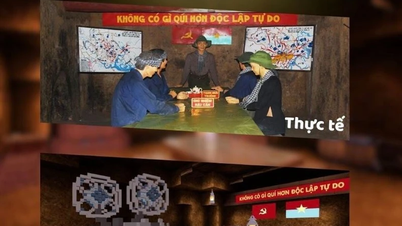



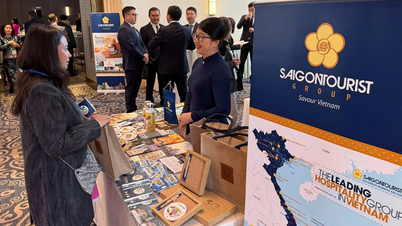


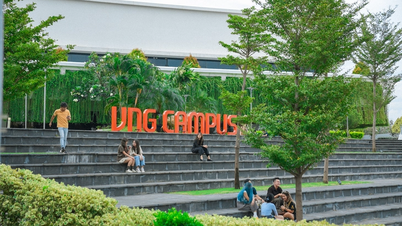


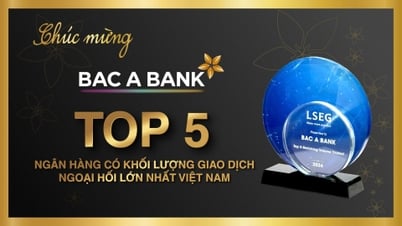








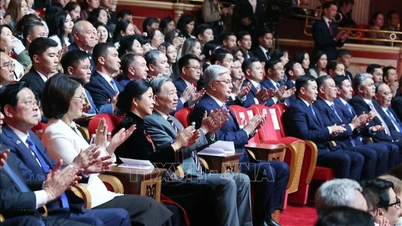
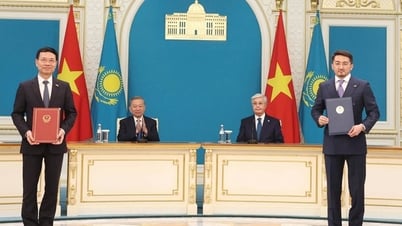





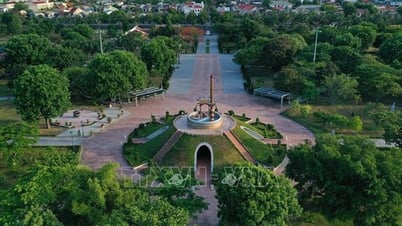



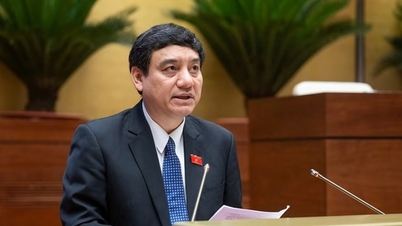




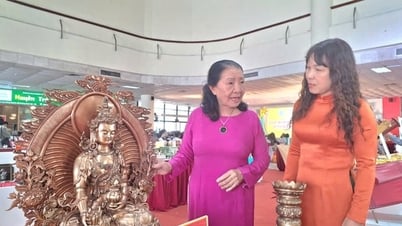
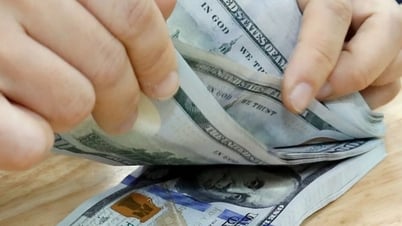


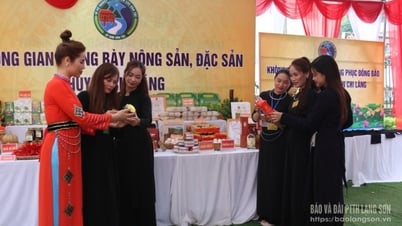

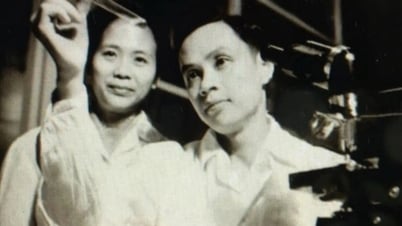
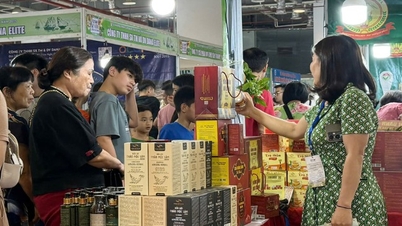


Comment (0)